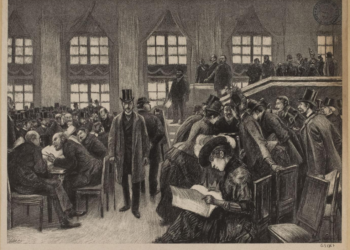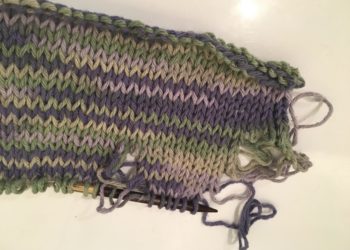Editor’s Note: Earlier this week I had the pleasure of sitting at a bar with Lisa Hinchliffe and (before we moved on to more entertaining subjects), she very patiently did her best to answer my questions about the intricacies of transformative agreements. It’s a subject that’s at the forefront of how librarians, funders, and publishers are trying to sustainably shift to open access models, yet it’s still not clear exactly what the term means. As far as I can tell, whether an agreement is “transformative” is in the eye of the beholder. What Coalition S might call “transformative” may not mean the same thing as Projekt DEAL’s use of the word or the California Digital Library’s. What one publisher calls “Read and Publish” might be called “Publish and Read” by a different publisher. In trying to sort all this out, Lisa’s primer from last year is an essential resource, and we wanted to revisit it today to help anyone (like me) struggling to wrap their head around the ideas these deals present.
Is it every day or just every week that we see an announcement of a new “transformative agreement” between a publisher and a library or library consortium? Or, if not a press release announcing such an agreement, a statement that such is the goal of a newly opened — or perhaps faltering — set of negotiations? Almost as quickly, the questions start. What’s read-and-publish? Is this contract Plan S compliant? What makes an agreement transformative anyway?
What follows is a basic primer on transformative agreements and their characteristics and components.

What is a Transformative Agreement?
At its most fundamental, a contract is a transformative agreement if it seeks to shift the contracted payment from a library or group of libraries to a publisher away from subscription-based reading and towards open access publishing. Though there are many flavors of transformative agreements, the following attempts to offer a description of their core components.
Transformative agreements are everywhere and, although they have received greater attention over the past year, particularly in North America, they are not new. All five of the largest publishers, as well as other smaller ones, have signed one or more transformative agreements. These agreements may be with an individual library (e.g., MIT/Royal Society of Chemistry), a library system (e.g., University of California/Cambridge University Press), or a library consortia (e.g., VSNU-UKB/Springer Nature).
Principles
Plan S brought the notion of transformative agreements to the forefront in contemporary discussions, but these agreements — and requirements that they be developed — well pre-date Plan S. Individual libraries, library consortia, and national organizations often develop specific requirements for the transformative agreements that they are seeking. For example, the Requirements for Transformative Open Access Agreements: Accelerating the Transition to Immediate and Worldwide Open Access provides guidance for Jisc Collections and for U.K. higher education institutions. Negotiating Journal Agreements at UC: A Call to Action does so similarly for the University of California system. ESAC: Efficiency and Standards for Article Charges (Max Planck Digital Library) provides a listing of Negotiation Principles Internationally.
Principles for transformative agreements typically include a number of components that are related to the transition from subscription-based reading to contractually-based publishing.
- Costs. Libraries seek transformative agreements to shift from paying subscriptions to paying for publishing with the goal of furthering movement toward an open access publishing ecosystem. Libraries may also pursue transformative agreements in order to attempt to exert control over rising payments for publishing, particularly under mandates for open access publishing.
- Copyright. Transformative agreements tend to require that copyright be retained by the author and not transferred to the publisher. Though this may be accomplished by the publisher procuring a license to publish, agreements increasingly couple copyright retention with a requirement that the author apply a Creative Commons license to the published article and possibly to the author manuscript version(s) as well. CC BY is very commonly recommended or required.
- Transparency. Principles for transformative agreements often insist that the terms of any such agreements be made publicly available. However, though full contracts are sometimes made public (e.g. DEAL/Wiley), even the most staunch advocates of open access transformative agreements may only provide an overview of the key components (e.g., MPDL-Max Planck Society/American Chemical Society).
- Transitional. Definitionally, transformative agreements are transitional in that they seek a pathway for a shift away from payment to read and toward payment to publish. They are predicated on an end state in which subscription-based reading payments cease to exist. This end state may not be imminent but such is the goal — a shift to open access and the concomitant paying for publishing rather than reading.
There are many aspects of transformative agreements that are not stipulated by the emerging consensus definition. For example, whether the agreement includes all of the titles in a publisher’s portfolio, whether the agreement is inclusive of hybrid and fully open access journals in that portfolio, and whether the payment for open access publishing is structured ala carte or as an all-you-can-publish buffet-like offering are among the components that are not specifically addressed. A transformative agreement for a portion of a publisher’s portfolio may be supplemented by an additional agreement addressing other titles or provision of services.
Read-and-Publish vs Publish-and-Read
Transformative agreements are increasingly described as either Read-and-Publish or Publish-and-Read.
A Read-and-Publish agreement is an agreement in which the publisher receives payment for reading and payment for publishing bundled into a single contract. This bundling together brings payment for publishing into a contractual arrangement rather than being addressed ad hoc by individual authors who are choosing open access publishing. In addition to publishing fees being brought under a contractual arrangement, a transformative agreement seeks to re-direct funds previously spent on subscription-based reading to the publishing component, often with a goal of a cost-neutral read-and-publish agreement in comparison with the previous subscription-based reading agreement. More aggressive library approaches seek a decrease in price rather than a cost-neutral approach; however, while some successfully concluded agreements to date may be cost-neutral, others in reality cost more (and may or may not include price caps or controls on total potential costs).
In contrast, a Publish-and-Read agreement is an agreement in which the publisher receives payment only for publishing and reading is included for no additional cost. Again, the library goal is typically a cost-neutral contract in comparison with the previous subscription-based reading agreement or perhaps a decrease in price; however, these goals are not always realized.
On the publisher side, it may be a distinction without a difference whether a particular contract is a read-and-publish or publish-and-read as long as the resultant total payment is acceptable and does not upend long-term financial viability, even if revenue declines. Some have questioned the advisability of these types of agreements, suggesting that they may be unsustainable in the long run. In addition, certain publishers have observed that such contracts are not currently universally desired and that some libraries/institutions are unable to fund publication fees.
For a single library, whether a contract is read-and-publish or publish-and-read may also be relatively inconsequential. Within a library consortium, however, publish-and-read may have a greater impact on the proportionate distribution of cost than read-and-publish. Under read-and-publish all libraries in a consortium remain responsible for read access whereas in a publish-and-read situation the costs may be borne only by the subgroup of libraries that are part of institutions that have scholars who publish.
Concluding Thoughts
It is worth noting that the draft of the Guidance on the Implementation of Plan S includes a substantial discussion of transformative agreements (Section 11) and adds additional considerations with respect to what cOAlition S considers transformative in 2019 vs what will be required starting in 2020. Specifically, the Guidance states that from 2020 onward, negotiations for transformative contracts need to be concluded before the end of 2021, that such contracts may not last for longer than three years, and that the agreements must include “a scenario that describes how the publication venues will be converted to full Open Access after the contract expires.” It is still unknown if this text will remain in the final version of the Guidance. If it remains, we may face the reality that the same contract might be listed as transformative by ESAC but considered not transformative by cOAlition S. This is not unlike the question of whether “bronze” open access is really open access. It depends on who you ask.
In addition to contractual transformative agreements between publishers and libraries, there are also a number of other models that seek to support open access publishing through various transformative mechanisms. Though I have not discussed these other approaches here, they are usefully described in Section 4 of Towards Transition Strategies and Business Models for Society Publishers Who Wish to Accelerate Open Access and Plan S. Some of these mechanisms might be pursued concurrently with transformative agreements while others would preclude doing so.
As for defining a “transformative agreement” per se, we know from attempts to define open access that definitions are debatable, debated, and continuously emergent. Reflected in this essay is a synthesis of the current terminology as used in recent contracts and policy documents. Given this is a fast-developing area, it is likely that the language will continue to be refined over time. I welcome comments and feedback to add clarity and nuance to our collective understanding.
Discussion
4 Thoughts on "Revisiting — Transformative Agreements: A Primer"
This is as usual from Lisa very helpful. I had a conversation with a publisher much involved in one of the deals and she told me how time consuming the whole process is and continues to be. I imagine it is equally demanding for libraries. Maybe someone from both parties might say something about this.
Thanks Lisa for this insightful overview.
It would be a huge step forward in this ongoing and sometimes confusing discourse if cOAlition S in their final version of the Guidance and in their any moment expected call for proposals for setting up a list of Plan S-compliant journals would stick to their own statement “cOAlition S […] will only financially support agreements after 1 of January 2021 where they adhere to the ESAC Guidelines.” (Plan S; Principles and Implementation) and if ESAC would indicate in their registry which agreements comply with their own guidelines (which they do not now). Under this definition the Project DEAL and California Library Library agreements would be transformative as well.
Very informative, thanks Lisa. Could I suggest changing ala carte to à la carte. Sorry I can’t do the italics.
Lisa — I appreciate this is a reposting of a previous blog, but I’d like to make clear that the updated implementation guidance to Plan S (published at the end of May 2019) removed the requirement that Transformative Agreements must include “a scenario that describes how the publication venues will be converted to full Open Access after the contract expires.”
This makes clear that our support for such Agreements will expire on New Years Eve, 2024.



